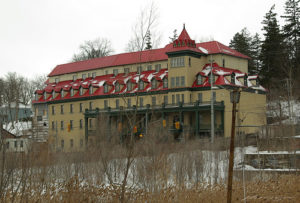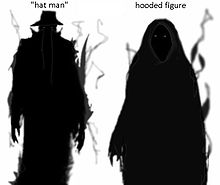So, you’ve decided to hunt ghosts have you? You’ve found a place to start, maybe based on local urban legends, you got a group of like-minded friends together and you’re planning to head out at sun-down for an evening of ghostly frights!?
Well, I suppose if all you’re looking for is a story to tell around the water cooler in the morning, be my guest. I’d venture to say that’s about all you’re going to get anyway. That is unless you refine your approach a bit and actually think about what it is you’re trying to do.
What follows are some simple rules for a basic ghost hunting investigation, these are the fundamentals of observation and evidence gathering and can almost be transferred to the investigation of pretty much anything.
These are; the 5 simple rules for investigating the paranormal.
Rule # 1
Have a purpose.
This is the foundation of any investigative exercise. If you have no purpose then you should be doing something else. Your purpose is also called your objective and this is a popular word among private and public sector investigators. Assigning an objective to your efforts helps you focus the process, it allows you to better understand what, where and how you will gather your evidence.
Let’s face it, this is exactly what we’re doing out here, right? Our ultimate goal is to obtain evidence, in some form, of the paranormal. Again, if all you’re looking for is a cool story to tell your friends the next day, feel free to skip ahead, but for the rest of you, lets look at what an objective does for our project.
At the very least, our objective lets us verbalize and put into writing our intentions (which is always a good thing), but that’s a pretty general way of looking at it. ‘I want to catch evidence of a ghost’, well duh! How’s about we be a little more specific than that?
‘I want to get a picture of a ghost’; that’s a bit better, it refines it enough to allow us to start the planning process. We now know a bit about the equipment we’ll need, a camera, and something about the environment we need, a place where photography is, first, allowed, and second, possible. This is great, now we can go ghost hunting! Right?
No, sorry to disappoint, but there’s a little more to consider.
Your objective should provide focus to every aspect of your hunt; think of the elementary school English lesson covering: who, what, when, where, why and how. Craft an objective to answer all of those simple questions and you’ll already be one step ahead of the guy who’s just looking for a cool story.
Rule #2
Know Your Subject
You might think we already covered this, but you’d be wrong. Knowing your subject is quite accurately, the second most important rule I paranormal investigation. Ultimately, this means, do your research, but it does have broader strokes involved.
Hand in hand with your objective, you should always be aware of what, specifically, you’re looking for. Now, there is a trap here, one that’s easy to fall into, but we’ll discuss that a little later. For the most part, successful paranormal investigators are people with a broad, general knowledge of many subjects, and a specific and vast knowledge of paranormal history, science and technology, as well as the specific lore or history of the places and people and things that they investigate.
This is not child’s play by any means; it can, and should be, serious business. Knowledge is power, and in this case, it’s the power to achieve your objective. Anyone who is serious about capturing evidence of paranormal activity, should understand that luck has very little to do with it. Planning, research and well focused execution are the keys to successful ghost hunting.
The degree to which you take your investigation serious will depend on you, and this by no means says that you can’t have fun while doing it. But which would be more fun? Goofing off and spending a night in a place that may or may not have energy attached to it, ultimately achieving nothing through your efforts, or a planned and careful approach, which ultimately bring the reward of an experience that you’ll never forget?
That’s a decision for you to make.
What’s involved in knowing your subject? Quite a bit actually. It means reading, and usually lots of it. On the most basic level, you need to know the history of the area you’re in (where you’ll be conducting the investigation), you need to know the lay of the land, and you need to know typically how different energies behave and react to outside influences.
Depending on the scope of your investigation, you’ll need to have a basic understanding of common physics, a familiarity with construction processes, a working knowledge (and certain amount of proficiency with) your equipment, specifically your camera equipment. You should have an understanding of photographic film processing and digital photo manipulation.
You should have a solid understanding and preferably some experience with hiking, camping and outdoor survival (you really never know where an investigation will take you). Some aptitude with human psychology would be an asset as well; after all, what is it you’re chasing but the essence of a person, complete with their own psyche.
A wise man once said (me actually); ‘There is no greater purpose in life than the continual and dogged pursuit of knowledge, for in learning is held the passion and capacity for all other endeavours;’ meaning of course, that as you learn about your craft, you will become more impassioned about the subject and ultimately more capable of achieving your objective.
The trap that was mentioned above, a very easy one to be caught in, comes from narrowing your focus too far, by becoming blinded to any other idea beside what it is you hope to achieve. In policing circles this is known as tunnel vision, and constitutes a major problem for inexperienced investigators. It happens when an investigator locks onto an idea, whether that idea is that a particular person is guilty of a crime, or that there is a specific entity, with an independent intelligence, that is responsible for the physical phenomena presented.
Coming with the knowledge you’ll gain through research, can come tunnel vision for the characters you find in that history, but reality may be throwing you a curve ball and you may end up interpreting events to fit the history, rather than being objective about the circumstances. Too much knowledge can be a dangerous thing, but erring on the side of overindulgence, in this case, is the safer bet.
Rule #3
Choose Your Team Wisely
It really is not enough to assemble a group of well meaning friends to assist you. What you will end up with is a group of dissenting, argumentative and uncooperative former-friends.
Maybe that’s a bit extreme, and maybe your friends are just as passionate and driven about paranormal investigation as you are, but likely, they share an interest, not a passion. You might choose to go it alone, and while that may be an easier task logistically, it won’t help your evidence any. Having someone, preferably a few someone’s, to back you up and corroborate your testimony and evidence is important; as is choosing the right someone’s.
Without overstating the obvious, choosing a team with the same goals as you is pretty much the first step, but beyond that, when recruiting for your ghost hunting crew, try to think of your own weaknesses, look for people who compliment your own capabilities by filling in gaps of knowledge, expertise, and other necessities.
Leadership is often a touchy point for most amateur ghost hunting teams, while there’s usually one person who stands out as the leader, there often are several who think that person is them. If you’ve chosen well, you likely have a group of people who know how to use their strengths, so a natural leader will likely become apparent. It is always best, however, to be open and up front with your team, so if conflicts arise, you can deal with them openly and quickly, thereby getting down to the business of hunting ghosts that much faster and more effectively.
Rule #4
Cultivate your writing skills
Let’s face it, the chances of you becoming the next host of Paranormal State are slim to none, so lacking the face friendly medium of television to get your evidence and ideas across, you’ll likely be limited to the internet for showing off your paranormal wares.
Becoming a better writer will serve to make your evidence more believable and acceptable by the mainstream public.
This is not going to be a rehashing of the teacher’s lecture from 11th grade English, but there are a few things you should keep in mind.
- Don’t embellish; making things, especially evidence, seem more fantastic than they really are, will eventually make you seem less credible than you really are. Where details are concerned, report the facts, leave your opinion out of it and accurately describe what you saw, experienced and captured on film or any other recording medium. Always let you reader make the conclusion…sometimes you’ll have to draw them a picture, but it is ultimately up to them to decide if what you present is true, false or very strange indeed.
- Spell check, spell check, spell check…and then spell check again. Nothing will reduce your credibility as a paranormal investigator faster, than poorly constructed, misspelled and unreadable articles. Take your time and do it right; after all, this is the point, to pass along what you’ve found in the field, make it count.
- Present your findings and let the chips fall where they may. Don’t bend to popular opinion, if you believe your results were caused by a particular phenomenon, say so, and stick to your guns. The naysayer’s and hard line sceptics will never be satisfied, so don’t let them dictate how or what you report.
Follow this advice and stay true to your objective and you really can’t go wrong. It all depends on you and your passion.
Rule #5
Don’t Give Up
There is no greater disappointment in life, then reaching your golden years with a regret, especially a regret about something that you had the power to change for the better. If you decide that ghost hunting is something you want to do, only you can decide the degree of your involvement, but if you truly want to find the truth, there’s nothing standing in your way.
Someday, some amateur ghost hunter will find proof of the existence of life after death, either that or they’ll prove a scientific explanation for the phenomenon, but either way you slice it, it’s people like you, with a passion for the business of ghosts, who are dong the real work and reporting the facts who will get that job done. Stay on your path and persevere, it’ll pay off in the end.
 Some would say that the crowning feature of human intelligence is language; which, as something that all races of humanity have achieved, is deserving of such stature. Others might point to more specific features of our advanced culture to support the assertion that mankind is intelligent. Either way, it is generally considered a fact that humans are intrinsically intelligent, with certain specific exceptions.
Some would say that the crowning feature of human intelligence is language; which, as something that all races of humanity have achieved, is deserving of such stature. Others might point to more specific features of our advanced culture to support the assertion that mankind is intelligent. Either way, it is generally considered a fact that humans are intrinsically intelligent, with certain specific exceptions.






 Shadowmen, Shadow People, Schattenwesen…whatever you call them, they are becoming the scourge of many an innocent mind.
Shadowmen, Shadow People, Schattenwesen…whatever you call them, they are becoming the scourge of many an innocent mind.